
Tne product still in naming, a potential Big Pharma partner, and a foothold field force in North America-those were the works in progress when we toured Eisai Co.'s headquarters and operations in Japan a few years ago.
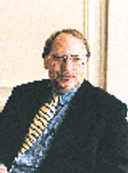
Wayne Koberstein, a 25-year veteran of the publishing industry, is editor-in-chief of Pharmaceutical Executive magazine. In 14 years as PE's Editor, he has overseen the emergence of the magazine as the leading business and marketing publication for the global pharma industry. He has interviewed and profiled more than 150 top executives in pharmaceutical companies, as well as major regulatory and healthcare leaders, around the world. Wayne has also directed the launch of numerous supplements and other ancillary business for the publication.

Tne product still in naming, a potential Big Pharma partner, and a foothold field force in North America-those were the works in progress when we toured Eisai Co.'s headquarters and operations in Japan a few years ago.

We all feast from the same kettle-and this season, we're not just feasting; we're swimming in a war-fired stew of events and issues.

Don't try this at home. That ought to be the common lesson we draw from most examples of pharma's current performance in the public arena.

On the last stop of a recent trip, I checked into the Bethesda Marriott. It was late afternoon, and as I entered my room, I flicked on the TV set and switched to the cable news. "Five Shootings, Five Dead, in 17 Hours," read the streamer, while the large screen showed a map of the area west of DC.

PR is more than free ink. It is even more than good free ink.

I was wondering whether I could take any more pain, when the moment slowed to a crawl. Pain wakened fear. Eternity lingered alongside. Mortality, grinning over my shoulder, blew a chill breath across the nape of my neck. "Dying would end the pain," I thought. "But I don't want to die like this."
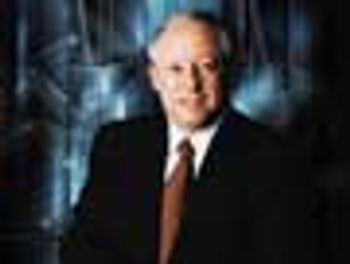
Rarely does the head of a top pharma company agree to meet with a journalist in the midst of a strategic challenge as large as this one-Merck's plan to establish Medco Health Solutions as a separate, publicly traded company.
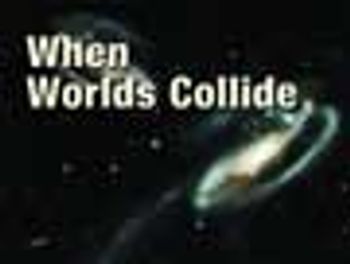
Pharmaceutical companies and their marketing partners face a common dilemma: how to translate scientific progress into market success. Despite huge investments, R&D never seems to produce an adequate number of products with blockbuster potential.

Sixteen years ago I began to edit Pharmaceutical Executive, a magazine unknown to me only a few months before. Today, I wonder how much I've learned in all the time since.

Just when pharma companies finally awake to the need for a good reputation, the stakes go vertical. The long-perceived and possibly illusory gap between shareholder behavior and public outrage suddenly disappears. And each company stands or falls on its revealed record.

Setbacks sometimes prompt a great leap forward. For Sankyo, a major product withdrawal-most painfully, of its potential blockbuster for diabetes, Rezulin (troglitazone)-created the reversal. Major liver effects appeared in the market

This season, boosterism is out; hedging is in. Yet a realistic assessment of the pharma market, even under the shadow of terror and war, reveals new opportunities. For every ominous sign or setback, a potential line of offense exists. Despite the press of a slow economy, nervous investors, customer consolidation, and cost-shifting in healthcare, the industry remains rich in resources, growth, and opportunity. Here are some of the market forces, issues, and opportunities for the pharma universe this year:

Science deserves all the credit it gets, and more, for driving this industry. Still, no science succeeds without a certain application of what we broadly call art. Inside the scientific discipline, many arts apply-the art of experiment, the art of planning, and the art of free association among them.
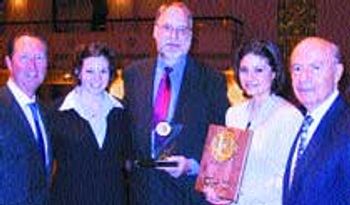
Perseverance furthers. Those two unadorned words from the ancient I Ching were all that first entered my startled mind as I accepted the Oscar of business-to-business media-the Grand Neal Award.

How quickly the promise of pharmacogenomics and other medical miracles materializes may soon depend more on war-driven politics than science. Only free exchange of scientific information in public arenas such as peer-review journals makes progress possible. But now in the United States, long an avatar of freedom and progress, the government's war on terror threatens to subjugate that tradition in a new culture of secrecy.

Who, or what, creates wealth? Answering that question has become as much political football as economic theory. Last month, the US president reminded us that government does not make wealth but, at best, fosters a climate conducive to it. The old-left idea that workers create and should share equally in the fruits of production has long since died of exhaustion. By process of elimination, the only apparent answer remaining belongs to idealistic capitalists, who herald the enterprising companies from which all wealth "obviously" flows-for most of us, as paychecks.
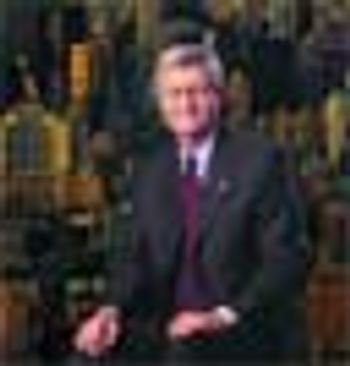
Pfizer's formidable front entrance in the heart of midtown Manhattan hums like no other in the industry. Compared with most pharma company headquarters, this is a train station.
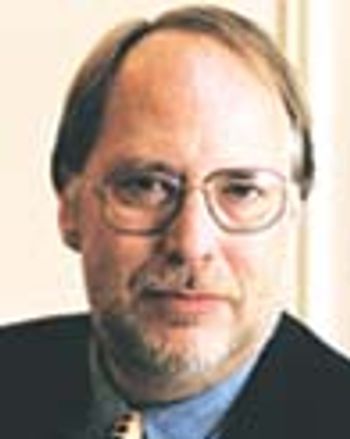
No one can pinpoint the precise instant it happened, but the dull cloud of our universe suddenly cleared. About a half-billion years had gone by since the Big Bang, finally giving the condensing proto-stars and quasars enough time to sweep a veil of dust from the young cosmos. Their light then penetrated the darkness and, along with that of countless other spawning suns, has traveled the skies ever since.
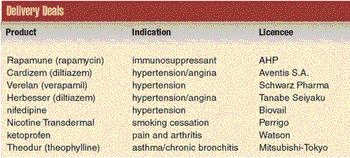
"My father had some great sayings, and one of them was: 'Never do a deal that's not a good deal for the other guy.'" So remembers Donal Geaney, chairman and CEO of Ireland-based Elan. Geaney's new American colleague Daniel Welch, president of Elan Pharmaceuticals, smiles in agreement from the other side of the table.

I heard the first bird of the morning whistling to his lover. Their small wings owned the sky again while the people fled for cover.

That marketing should begin early in product development has become a truism in the pharma industry. But as a statement on its own, it sheds little light. What does it mean to begin? At what point do marketers insert themselves into the process? To what end do they enter where once only scientists trod? And, the ultimate question—which the truism fails to answer—how might their intrusion affect the lives of patients, in trial or thereafter?

Is the pharmaceutical industry surrounded by its critics? Can the industry be liberated from the moral bind others want to impose on it? Those are questions I asked and attempted to answer in two recent editorials (PE April and June 2001). Actually, the simple answer was yes to both. But other answers prove more complex.

I intended to write an entirely different column this month. Something like, What the Bush administration has done for you-the pharmaceutical industry-lately. Such as making it harder to do stem-cell research and pursuing an investigation into antigeneric activities. But something else happened. My father died. Now I have no room left in my mind or heart for other matters.

Grass never grew under her feet. She steadily rose to the top from the ranks of her industry. Now one of a handful of executive vice-presidents on the chairman's own management team, she co-directs the most important unit in the Pharmacia corporation, prescription pharmaceuticals, holding the title of president in that business.

Pharmaceutical executives should study their own scientists. They construct clever tools to explore convoluted phenomena. They are the true friends of complexity.

Patents before profits. That soundbite snagged my ears and turned my full attention to the CNN business report. I recognized the voice and the face}Ray Gilmartin, chairman of Merck. Calmly and reasonably, he explained how extraordinary circumstances in the developing world demand that his company uncouple the normally fused objectives of high profitability and unwavering patent protection.

}Drug costs continue to rise at an alarming rate. Two major reasons for the increasing costs are introductions of new drugs and direct-to-consumer advertising campaigns that have been effective in marketing expensive name brand drugs.}

During our conversation, Reeve pushes an even broader agenda: getting pharmaceutical companies to realize the huge market potential in spinal-cord research for a host of neurological conditions. He implores companies to put their attention, and their investment, into enterprises that are creating breakthroughs in new technologies promising wide therapeutic application.

Managing expectations is the new alchemy. All manipulators of opinion, from the US president down to the humblest peddler, now seek to minimize what people expect

My parents recently showed me an old news photo of my brother being moved from one hospital to another, in his iron lung. The year was 1950. Just seven years old, visibly smiling as usual in his overhead mirror, Gary lay prone as a small crowd of medics guided the huge wheeled cylinder toward a waiting ambulance. Polio had widely destroyed the motor neurons in his brain and spinal cord, and his muscles had atrophied from lying still. The iron lung pushed and pulled his chest through the breathing cycle. Gary lived only a few months after the photo's dateline.

Published: February 1st 2001 | Updated:

Published: May 1st 2001 | Updated:

Published: February 1st 2002 | Updated:
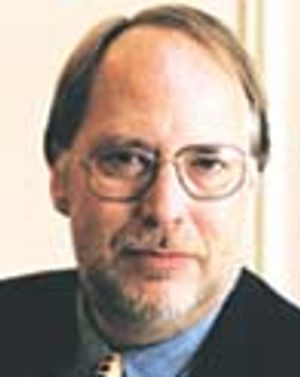
Published: December 1st 2001 | Updated:

Published: April 1st 2001 | Updated:

Published: March 1st 2002 | Updated: